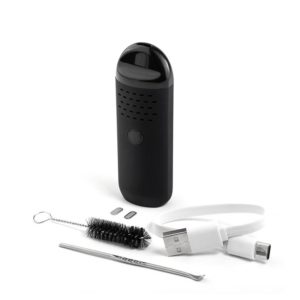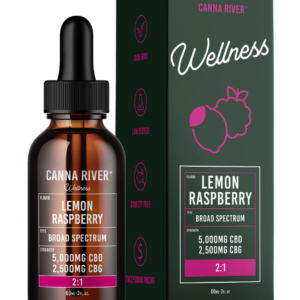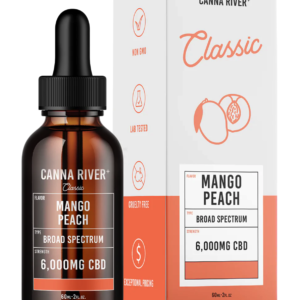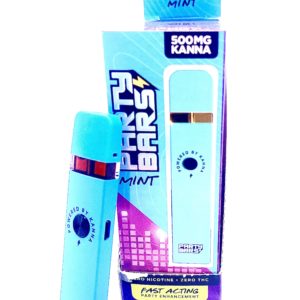By: Paul Kemp
Kratom, that mysterious herb that evening news reporters urge us to fear, is actually doing a better job at ending opioid drug addiction than pricey drug rehab stays ever could. Why is there so much blind opposition to what is clearly American ingenuity at work?
The Answer Is Obvious: Money! Conventional Drug Rehab is Big Business with 40-60% Return Customers.
In the USA, painkiller addiction usually starts with a visit to the doctor. Addiction should be no surprise when we have so many painful conditions for which the medical profession has no cures. Primarily, doctors rely on pain relieving opioid drugs to ease the symptoms. Many patients manage to walk the fine line of dependence and avoid addiction, but others, for a variety of reasons, do not succeed at this tightrope act.
The widespread use of Kratom is merely a populist response to a massive problem that is not being addressed in a user-friendly fashion. We have no clear idea of how much Kratom use is medicinal and how much is recreational, but the medicinal users are more in need of a voice. They have a compelling story that is not being told — and they stand to lose a lot, as a result, if Kratom is banned.
People became addicted to opioid drugs because, for a time, that was all that was being offered to control the pain associated with Lyme, Multiple Sclerosis, Rheumatoid Arthritis, Osteoarthritis, and Fibromyalgia, to name just a few. When the DEA put pressure on medical doctors to stop prescribing so many pain pills and patches — and “pill mills” were shut down — patients turned to the Internet, looking for legal, natural sources of relief. There, they found Kratom.
It is more accurate to say that “they found information about Kratom”. It is a matter of conjecture when Kratom was first brought to the USA and sold to the public in any organized fashion. Kratom has long been used in Oriental medicine, but unless it was proved that it was sold in the U.S. before the date of the enactment of the Dietary Health Safety and Education Act of October 15, 1994, Kratom still exists in a state of legal limbo.
Kratom, While Currently Legal in 46 States, Is Facing Intense Opposition, Calling for it to be Banned
Nevertheless, Kratom was evidently brought here and distributed by some botanical entrepreneur as long ago as 2000. This, however, means that Kratom — as it stands now — will still need to prove its scientific merits and safety in expensive testing, quite unlike the many native and imported herbs that just happened to have been here before the arbitrary 10-15-1994 date of DSHEA.
This expense will no doubt be passed along to the consumers of Kratom, pricing the herb beyond the affordability of many Americans who have been surviving on disability payments for years while vainly hoping for a cure to their disease.
Kratom Offers a Major Cost and Convenience Advantage Over Conventional Drug Rehab Programs Getting free from narcotics is relatively easy when you know there is a way to overcome the terrors of withdrawal. Kratom is the ticket to a minimally-uncomfortable withdrawal and, — as Dr. Edward Boyer describes withdrawal — “we learned that Kratom blunts that process awfully, awfully well.”
Actually, there are two locks on the door that prevent addicts from leaving their habits, even though most want to. One is their awareness of how humiliating and inconvenient the conventional system of rehab is, and the other is that they have either never heard of Kratom or they doubt that an herb could truly cancel most of the withdrawal from a powerful narcotic like OxyContin.
(There are also a smaller number of addicts who like opiates and don’t mind the inconveniences of the lifestyle it creates. There is not much we can do for them.)
For many chronic pain patients, opioid drugs have stopped working and they are left with the dreary side-effects of brain fog, social isolation, and the prospect of spending the rest of their lives in bed, depressed, still in pain, barely living.
Obtaining some Kratom from online vendors is easy enough. Learning to use it successfully is accomplished with coaching from the virtual Peanut Gallery of experienced observers on Facebook. Then, like one’s first parachute jump, those who are committed to avoiding the agony that is already creeping over them (perhaps because their doctor has cut them off) gives them the courage to try Kratom.
“Will it work for me?” is a question that comes up in various forms as newbies join Kratom chat groups on Facebook and are wondering how and IF Kratom could work for them.
The crowd of loving, experienced bystanders usually chimes in with encouragement and their own stories of success.
As the curious newbie scans the chat strings of the group, they may find people like themselves sharing, in real time, their detoxification experiences, helped by Kratom. They can ask questions of real people going through the same experience they are considering. This helps greatly in persuading them to “take the leap of faith” and trust that Kratom will cushion their descent and return them unharmed to sobriety, while removing the pain that led to addiction.
Here are snippets of one typical conversation string of a young mother, Kristi, who is about 4 days into withdrawal at this point:
Kristi: “I am just in awe about how awesome Kratom really does work!”
Kristi: “My 9 year old doesn’t know that I am detoxing from my narcotics and she said, “Momma you look different today. You look so pretty!” That made me feel good and is helping me get thru this. I am shocked she noticed such a big difference in just 45 hours!!!!!”
“I don’t feel bad at all. I am sleepy and just sitting around. I feel good except for my tummy feels a little nauseous. I keep waiting for withdrawals to get crazy but it hasn’t. I highly recommend doing this. Best part is my pain levels used to be insane but I am not in any pain at all! No joke. If I would have known this was this easy, I would have done this along time ago. Thank you all for the encouragement. I know I couldn’t have ever done this without all of you cheering me on!”
Maria: “I kept questioning when the hammer was going to drop and I would get sick sick in detox. Finally after a week I was like “Okay, I guess this is life and that really just happened. A plant worked when everything else had failed.”
Kristi: “Now I see just how bad pain meds made me feel. Pain meds amplified my pain times a 1,000. I am sitting here in no pain at all.
Pain meds are evil. They want to take your life. I truly believe that now.”
Maria: “I was on a crash course with a death wish it seems and couldn’t seem to stop it until I found Kratom!!”
Enter the Naysayers
Here is a solution from “outside the box”. I have watched the same people get on with their lives. I have surveyed them to see if they have relapsed at all. Only a few have admitted they had: Something may have gone badly in their life or perhaps the underlying pain — emotional or physical — that caused them to seek a prescription came back and the Kratom they had wasn’t enough to handle it.
Those I’ve talked with who admitted they had relapsed found the opioids were not as much fun as they remembered and they quickly found their way back to sobriety with Kratom.
Remember, real pain was what drove them to the doctor to find relief. Since conventional medical practitioners have no cures for any of these issues, there is still the underlying need for something to help them handle the pain. Accusing Kratom of being “just trading one addiction for another” misses this crucial point.
To ban Kratom because there isn’t the money behind it to fund the millions of dollars worth of studies to prove its safety, is absurd. Most of the drugs that are now causing one hundred thousand U.S. deaths a year were all approved by the FDA; Kratom, by itself, has yet to kill anyone in hundreds of years of field-testing in humans. FDA approval is no guarantee of safety; it is merely a barrier to entry that keeps inexpensive natural products out of the hands of the public.
Since we are at risk whether we take prescribed pharmaceuticals or OTC natural herbs, shouldn’t we be free to choose which we prefer?
Turning Kratom into another pharmaceutical drug is not the answer. There is no need. Taking this herb apart to turn each of Kratom’s 29 or so alkaloids into prescription drugs isn’t needed for safety. Most Kratom consumers agree it would be hard to improve on Nature. It works fine, as it is.
Kratom works so well because it is a combination-of-ingredients formula which covers many issues quite well at low cost. Unlike pharmaceuticals, it is impossible to cause a fatal overdose.
Dr. Ed Boyer: “Of course, now that we have a country with many addicted people dying of respiratory depression, having a drug that can effectively treat your pain with no respiratory depression, I think that’s pretty cool. It might be worth a second look for pharma companies.” Elsewhere Dr. Boyer said, Interestingly, respiratory depression following Kratom administration has not been observed in either humans or in animal toxicology studies…”
Kratom is more than a better pain reliever, without most of the downside of opiate and opioid painkillers. Kratom is a combination of ingredients that addresses, not only pain, but also anxiety, depression, fatigue, and diabetes — all at the same low cost. Kratom is now producing great savings for the U.S. medical system, as the consumer pays for it out of their own pocket and it saves insurance or Medicare from paying for multiple prescriptions for that individual!
Is it any wonder that Big Pharma, Rehab clinics and others with a vested financial interest in the status quo don’t like Kratom? Is it any wonder that media channels like the New York Times and the TV stations throughout the nation are quick to agree that Kratom may be dangerous … to their profits?
And so, we see this “proxy war” on the TV and in the mass print media, proclaiming Kratom the new threat to our innocent children, which is not the real issue, at all. The real issue is that Kratom is helping hundreds of thousands, perhaps millions of Americans by now, get free of multiple addictive prescription drugs and replace them with one inexpensive herb and they feel better than they have felt for years.
These people are not deluded, doped-up, or hallucinating. This is merely the result of neutralizing the pain, freeing them from the opioid side-effects, and providing a mild adrenal stimulation.
With an aging population and a medical monopoly system that sucks out 19% of the the GNP of the U.S. economy, maybe Congress should consider the benefits of Kratom for reducing budget red ink, while reducing opioid addiction.
Maybe our states, instead of trying to ban Kratom one-by-one, should consider the savings to their budgets that Kratom is providing.
Must we shame our politicians by asking, “Are campaign funding by the pharmaceutical and the drug rehab industries sufficient reason for you to ignore the benefits this herb could provide to the people of your state?” We’d like to believe our politicians are better than that. The ultimate test is how they vote, not what they say on this subject.
If Kratom was only used for helping addicts detox and get free from addiction, it would be a God-send, but, it is so much more. It should be welcomed, not harassed and threatened with state or national bans (which never work, anyway).
Let’s turn over a New Leaf, America!
Kratom is a uniquely useful herb and can be a real turning point, leading to a healthier U.S. population that may begin to focus more on prevention, having learned the shortcomings of synthetic pharmaceutical medications — and the power of medicinal herbs.




